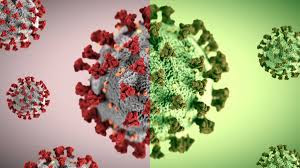Research finds that lowering blood insulin levels can reduce the risk of COVID-19
Keeping insulin levels in the blood within strict, healthy
parameters is a daily goal for diabetics. But now, researchers from Japan have
discovered that regulating blood insulin levels may even help reduce the risk
of COVID-19. In a study published this month in the journal Diabetes,
researchers from Osaka University discovered that a protein called GRP78 helps
the virus that causes COVID-19 to bind to and enter cells.
Have Researchers found that SARS-CoV-2 binds to a protein on the surface of cells?
Researchers from Osaka University found that SARS-CoV-2 binds
to a protein on the surface of cells, and the expression of this protein is
promoted in the high blood insulin levels of elderly, obese and diabetic
patients
GRP78 is a protein found in adipose tissue (ie fat). Elderly,
obese and diabetic patients are all more susceptible to COVID-19. Although the
reasons are still not fully understood, a team from Osaka University has given
some explanations on this issue.
"It has recently been suggested that adipose tissue may be a major reservoir of SARS-CoV-2 (the virus that causes COVID-19)," said Jihoon Shin, the lead author of the study.
"Because of this, we want to investigate whether there is any link between the excess fat tissue of elderly, obese and diabetic patients and their vulnerability to COVID-19." To do this, the researchers studied GRP78, which was recently believed to be involved in the interaction of SARS-CoV-2 with human cells.
What is the main method for SARS-CoV-2 to enter human cells?
The main method for SARS-CoV-2 to enter human cells is through the spike protein on the surface of the virus to bind to a human cell surface protein called angiotensin-converting enzyme 2 (ACE2).
Shin and his colleagues found that the
spike protein can also directly bind to GRP78, and the presence of GRP78 will
increase its ability to bind to ACE2. In order to understand the involvement of
GRP78 in the COVID-19 vulnerability, they investigated the extent of GRP78
protein in the tissues of elderly, obese and diabetic patients.
"The results are very clear," explained senior
author Iichiro Shimomura. "GRP78 gene expression is highly up-regulated in
adipose tissue and increases with age, obesity and diabetes."
Whether insulin was involved in the expression of GRP78?
As we all know, aging, obesity and diabetes are related to the increase of insulin levels in the blood. Therefore, the team wanted to know whether insulin was involved in the expression of GRP78. They found that exposing cells to insulin does induce GRP78 expression.
Importantly, they found
that the use of widely used anti-diabetic drug treatments to reduce insulin
levels can successfully reduce GRP78 expression levels, and exercise and
calorie restriction in mouse models also help reduce GRP78 levels in adipose
tissue.
"Our research results show that high blood insulin
levels are an important risk factor that can make the elderly, obese and
diabetic patients susceptible to COVID-19. Therefore, drug intervention or
environmental interventions (such as exercise) are used to control blood
Insulin may help reduce the risk of these patients," Shin said.
How to reduce the risk of infection for these vulnerable patients?
Given the global impact of the SARS-CoV-2 pandemic, the
results of this study provide important insights on how to reduce the risk of
infection for these vulnerable patients. Reducing the expression of GRP78
through drugs or environmental interventions may improve the outcome of these
patients.
10 symptoms of new coronary pneumonia
At present, the epidemic situation in China is still severe.
The main strains transmitted are Delta mutant strains, which have the
characteristics of fast spreading, fast replication in the body, and long time
to turn negative, which poses greater challenges to prevention and control.
So, what should we pay attention to in the face of the more
transmissible Delta mutant strain? What are the symptoms of being infected with
the new coronavirus mutant strain?
How should we protect against the new coronavirus?
1. Wear a mask when going out. Wear disposable medical masks
or medical surgical masks when you go out to public places, seek medical
treatment and take public transportation.
2. Maintain hand hygiene at all times. Reduce exposure to public goods and parts in public places; when returning from public places, after coughing and covering your hands, before and after meals, wash your hands with hand sanitizer or soap and running water, or use alcohol-based hand sanitizer; when you are not sure whether your hands are clean. Avoid touching your mouth, nose and eyes with your hands; when sneezing or coughing, cover your mouth and nose with your elbows.
Author's Bio
Education: MBBS, MD
Occupation: Medical Doctor
Specialization: Community Medicine, General Surgery, Natural Treatment
Experience: 18 Years as a Medical Practitioner




Comments
Post a Comment